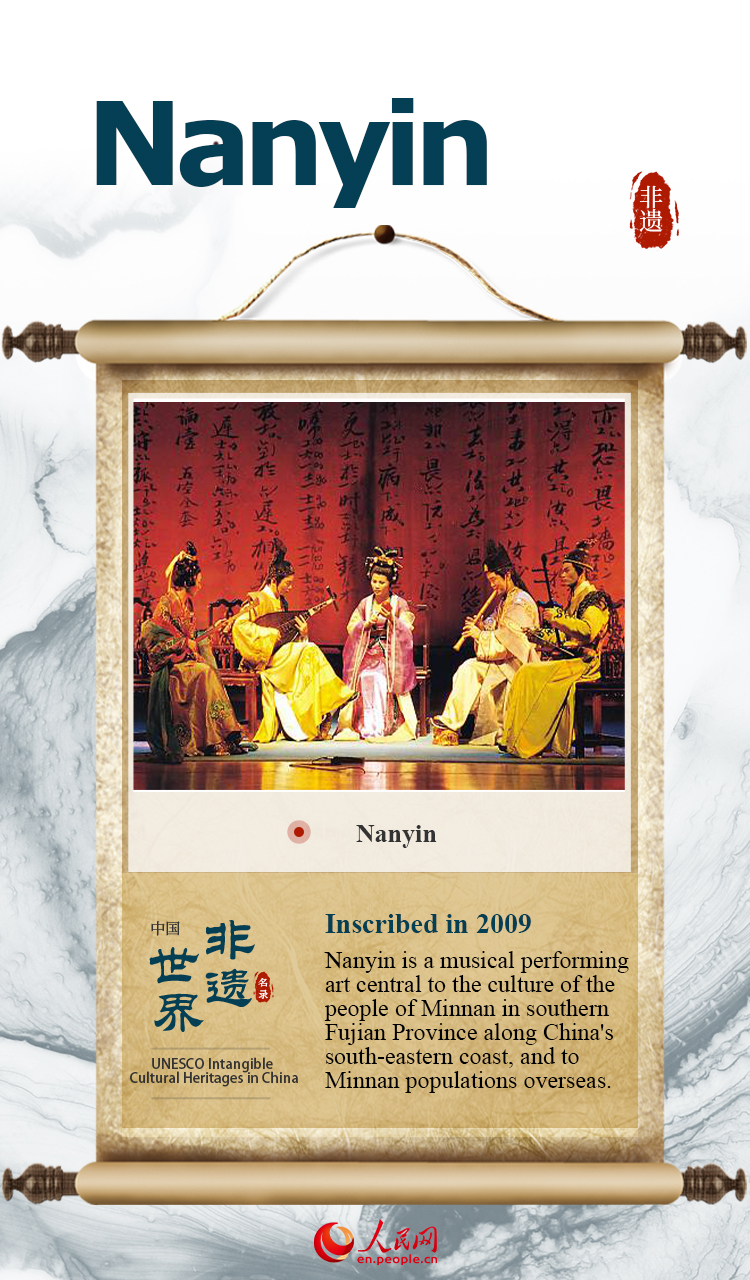UNESCO's Intangible Cultural Heritages in China (Ⅲ) (11)

Nanyin
The term, "Nanyin" was inscribed on UNESCO's Representative List of the Intangible Cultural Heritage of Humanity in 2009.
Nanyin is a musical performing art central to the culture of the people of Minnan in southern Fujian Province along China’s south-eastern coast, and to Minnan populations overseas.
The slow, simple and elegant melodies are performed on distinctive instruments such as a bamboo flute called the dongxiao and a crooked-neck lute played horizontally called the pipa, as well as more common wind, string and percussion instruments.
Of Nanyin's three components, the first is purely instrumental, the second includes voice, and the third consists of ballads accompanied by the ensemble and sung in Quanzhou dialect, either by a sole singer who also plays clappers or by a group of four who perform in turn.
Nanyin is performed during spring and autumn ceremonies to worship Meng Chang, the god of music, at weddings and funerals, and during joyful festivities in courtyards, markets and the streets. It is the sound of the motherland for Minnan people in China and throughout South-East Asia.
With input from UNESCO
 |
Photos
Related Stories
- Feature: Chinese classical music resonates in ancient Swiss city
- Chinese culture exhibition held in Paris
- How China helps preserve cultural heritage sites in Asia
- Museum in NW China's Gansu uses latte art to give more people a taste of culture
- Chinese culture courses launched in Myanmar's Yangon
- Sound of replicas of Chime Bells of Marquis Yi of Zeng digitally preserved
- China encourages integrating intangible cultural heritage, tourism
- Digital technologies help revitalize ancient city wall in NW China
- China's cultural, tourist market rebounds during Spring Festival holiday
- UNESCO’s Intangible Cultural Heritages in China (I)
Copyright © 2023 People's Daily Online. All Rights Reserved.









